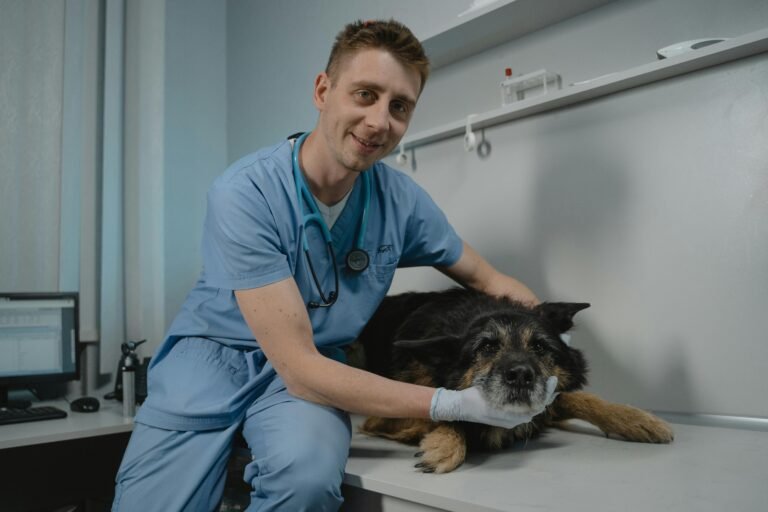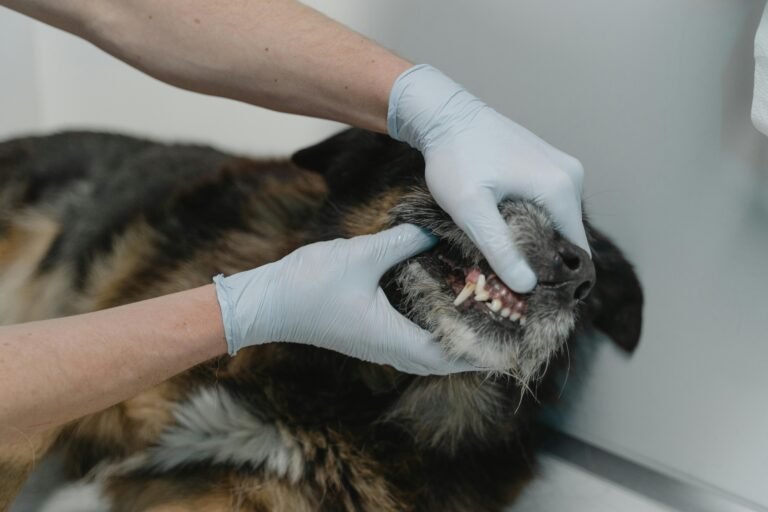Introduction
Most dog owners know about annual vaccines—but routine health checkups involve far more than shots. Just like humans, dogs benefit from regular preventive care to catch small problems before they become big ones. A yearly (or twice-yearly for seniors) vet visit gives your pup a full wellness snapshot—from heart health to teeth, weight, and internal organs. Here’s a breakdown of what to expect at your dog’s annual exam and how to keep them thriving year after year.
Why Annual Checkups Matter
Dogs age faster than humans, and health changes can happen quickly. Many conditions—like kidney disease, thyroid issues, or dental infections—start silently. Routine exams allow your veterinarian to detect these early, improving treatment outcomes and quality of life. Preventive care is not only more effective—it’s usually more affordable than treating advanced illness.
How Often Should Your Dog Visit the Vet?
- Puppies: Every 3–4 weeks until about 16 weeks old for vaccines, deworming, and growth checks.
- Adults (1–7 years): Once a year for a full wellness exam, vaccines, and screenings.
- Seniors (7+ years): Every 6 months, with more frequent lab work to monitor age-related conditions.
Dogs with chronic health issues may need additional visits depending on their care plan.
What Happens During an Annual Vet Exam
A comprehensive checkup covers much more than you might realize. Here’s what your vet typically reviews:
1. Physical Exam
The vet starts with a nose-to-tail physical assessment, checking:
- Skin and coat condition (signs of allergies or parasites)
- Eyes and ears for discharge, redness, or infection
- Teeth and gums for plaque buildup, odor, or inflammation
- Heart and lungs for murmurs or irregular breathing
- Abdomen for lumps, pain, or organ enlargement
- Joints and muscles for stiffness or arthritis
2. Weight & Body Condition
Over half of dogs in the U.S. are overweight. Your vet will assess body condition score (BCS), discuss portion sizes, and recommend exercise routines. Even small weight adjustments can significantly extend your dog’s lifespan and reduce joint strain.
3. Dental Health Evaluation
Dental disease is one of the most common hidden health issues. Vets look for tartar buildup, bad breath, gum inflammation, and loose teeth. Depending on findings, they may recommend a professional cleaning or daily at-home brushing routine.
4. Heartworm & Parasite Screening
Annual heartworm testing ensures prevention medications are working. Your vet may also perform fecal tests to check for intestinal parasites and tick-borne diseases—especially if your dog spends time outdoors or travels frequently.
5. Bloodwork and Chemistry Panel
Routine blood tests provide a window into internal health. These may include:
- CBC (Complete Blood Count): Detects anemia, infection, or immune problems.
- Chemistry panel: Monitors kidney, liver, and pancreatic function.
- Thyroid screening: Especially for middle-aged and older dogs.
Even healthy dogs benefit from baseline lab work—it helps spot subtle trends over time.
6. Urinalysis
This simple test checks kidney function, hydration status, and early signs of urinary tract infections or diabetes. It’s an easy but valuable part of the wellness picture.
7. Vaccinations & Boosters
Your vet reviews your dog’s lifestyle to determine which vaccines are needed. Common ones include:
- Rabies (legally required in most areas)
- DHP/DHPP (distemper, hepatitis, parvovirus, parainfluenza)
- Leptospirosis (for outdoor or water-loving dogs)
- Bordetella (kennel cough) and influenza for social dogs
Many vaccines now have 3-year versions, reducing how often your dog needs boosters.
What to Ask During the Visit
Your vet visit is a chance to discuss changes and ask questions. Bring notes about:
- Diet and appetite changes
- Energy levels or unusual behavior
- Drinking or urination patterns
- Itching, limping, or dental pain
- Any new supplements, treats, or medications
Even minor details can help your vet identify early warning signs or adjust care recommendations.
At-Home Health Checks Between Vet Visits
Regular monitoring at home keeps you connected to your dog’s health. Every few weeks, check:
- Weight & body shape: You should feel ribs but not see them prominently.
- Gums: Should be pink and moist, not pale or sticky.
- Eyes & ears: Clear, bright eyes and clean, odor-free ears.
- Skin: Free of lumps, hot spots, or fleas.
- Energy levels: Consistent playfulness and alertness are good signs.
Senior Dog Considerations
For dogs over seven, more frequent checkups—every six months—are ideal. Additional screenings may include:
- Blood pressure measurement
- Advanced imaging (X-rays or ultrasounds)
- Arthritis or pain assessments
- Cognitive and mobility evaluations
Early detection helps senior dogs stay active and comfortable for years longer.
How to Make Vet Visits Easier
Many dogs get nervous about the vet. To make it smoother:
- Practice short, positive visits—just to get treats from the staff.
- Bring a favorite toy or blanket for comfort.
- Use calming chews or pheromone sprays if your dog gets anxious.
- Schedule quieter times of day when the clinic is less crowded.
Reducing stress helps your dog associate vet visits with positive experiences, not fear.
Conclusion
Routine health checkups are the cornerstone of preventive care. They give you peace of mind, help your vet catch issues early, and ensure your dog enjoys the healthiest, happiest life possible. Think of annual exams as your dog’s yearly tune-up—keeping everything running smoothly so they can keep exploring, playing, and cuddling for years to come.






